Termite Control & Treatment
Do you have a termite infestation? Are you seeing signs of termites in your home or business? Schedule a service with Plunkett’s today to get rid of unwanted visitors!
What are Termites?
Termites are wood-destroying insects of the Isoptera infraorder. There are three common types of termite: damp wood, dry wood, and subterranean. The Eastern subterranean termite is the most common termite species in North America. They usually measure between ¼ and ½ of an inch long and range from white to light brown in color.
Within a subterranean termite colony, there are three groups, or “castes,” of colony members: workers, soldiers, and reproductives. Workers gather food, soldiers build shelter and protect the colony, and reproductives produce and tend to the larvae. The colony’s king and queen are the primary reproductive termites.
How Do I Know If I Have Termites?
There are several early signs of a termite infestation. To find these signs, start outside your property’s foundation and work your way inward. Look for the following:
- Blistering wood or paint
- Mud tubes
- Discarded wings
- Warped frames
- Frass/droppings
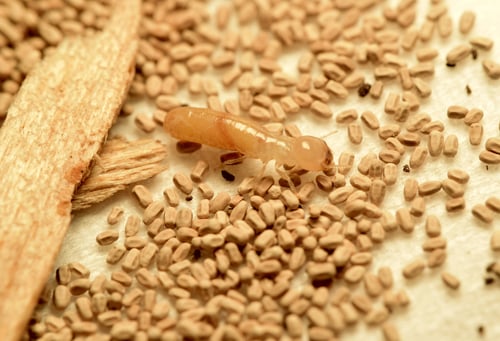
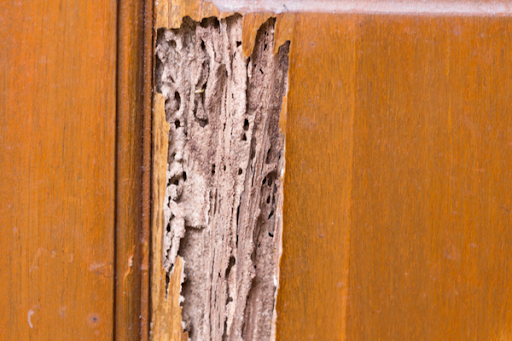
What Does Termite Damage Look Like?
It can be difficult to tell the difference between termite damage and wood rot. Peel away layers of the wood in question and look for channels where termites have dug into the wood. The lines will widen and narrow. If the wood is still firm, you likely have termites. If the wood is spongy and breaks off easily, it may simply be wood rot.
Termites are attracted to wet or rotten wood so look for other signs such as mud tubes, sawdust-like waste and pin sized holes. A pest control expert can help confirm whether you have termites or not.Why Do I Have Termites?
Moisture—termites require a constant source of moisture while they work their way through wood. So, if you have termites it’s because the wood around your property is wet. Wet or moist wood could be caused by plumbing leaks, condensation from humidity, excessive runoff, or another source of moisture. This is why it’s important to take care of any plumbing damage or leaks right away.
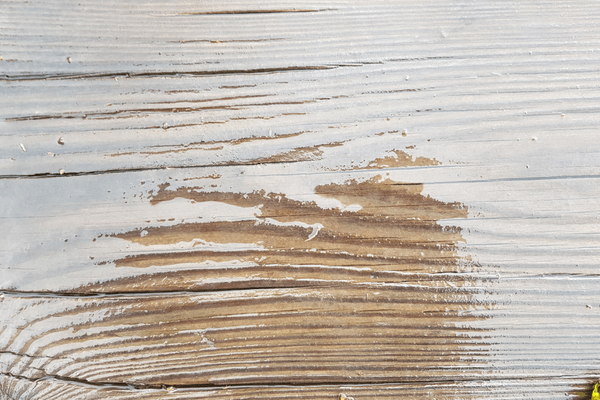
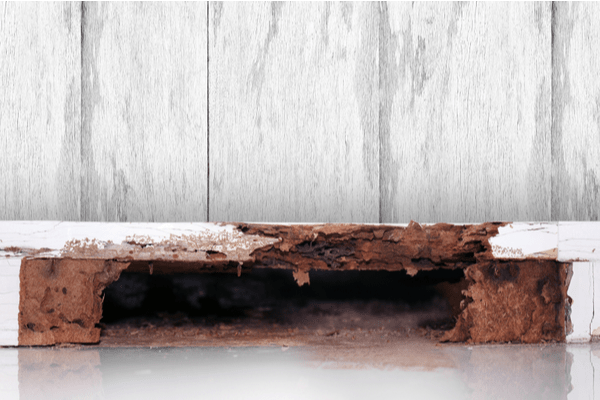
How Do Termites Get Inside?
Wood-to-ground contact is the most common way termites enter a building. However, there are several ways termites can get inside your home. Termites frequently carve tunnels through vulnerable wood in door frames or porch steps to access interior wood. They can also enter through cracks in the foundation and in brick mortar.
Termites only need 1/16" to pass through your foundation and reach the wood, making it difficult to keep them out. They will construct mud tubes to travel from their nest to their food source in your home.
Why Are Termites a Problem?
Termite colonies can cause substantial property damage when they feed on wood. The National Pest Management Association estimates termite damage costs U.S. homeowners $5 billion each year. Colonies never stop feeding or growing, which means the longer an infestation establishes itself, the worse the damage it can inflict. Your best bet is to eliminate termites as soon as you see them by hiring a professional pest control company, like Plunkett’s.
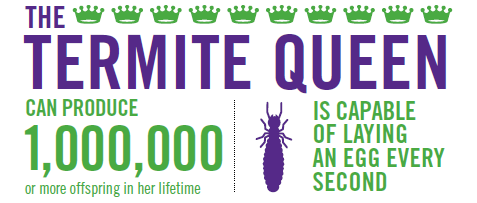
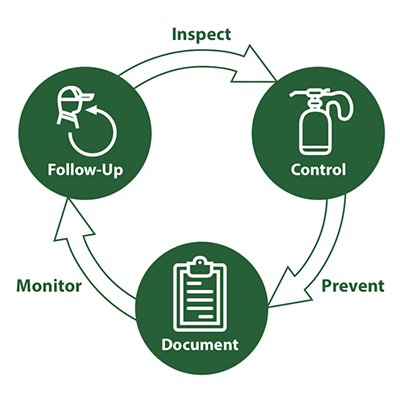
How Can Plunkett’s Solve My Termite Problem?
Not only can Plunkett’s rid your home of a current termite infestation, but we’ll help prevent future termite issues as well. Plunkett’s experts are licensed to use the Sentricon® termite baiting system to control and prevent infestations.
The process consists of an initial installation that automatically renews annually. Our technician finalizes the contract and pricing on-site. Our goal is to get rid of your termites in a quick, efficient, and cost-effective manner!
What is The Sentricon® System?
The Sentricon® System is scientifically designed to eliminate and prevent subterranean termite colonies.
We want to help you keep your property protected now and in the future! Sentricon® does not require digging and trenching, structural drilling, injected chemicals, or extensive scheduling hassles. Whether you’re looking to prevent future infestations or rid your home of a current one, there are Sentricon program levels that will fit your specific situation.
Sentricon® program levels:
- Corrective: Visual evidence of subterranean termites
- Preventive (Pre-treatment): No visual evidence of subterranean termites.
- Bundled: Sentricon® is sold with an additional pest control service.
- Standalone: Sentricon® is sold as a standalone service without an additional pest control service.
Plunkett's Pest Control for Termites
At Plunkett’s, our goal is to help you quickly, conveniently, and in the most cost-effective way. We make every effort to be with you asap, usually within a day or two. When you see signs of termites, call us!
Frequently Asked Questions
How to Tell If You Have Termites
Signs of an existing termite infestation include wall damage, floor damage, piles of pellets, and carved patterns in your home’s wood. Unfortunately, nearly anyone could have termites: they’re found on every continent in the world except Antarctica. The longer termites are established, the worse the damage they can inflict. Read more!
Where Do Termites Come From?
Knowing where termites come from is crucial to keeping them out of your space. You might think termites come from rotted wood. But that’s just what they eat! The most common type of termite comes from the ground. That’s where they live, build huge colonies, and serve their termite queen! Read more!
When Are Termites Active?
Although flying, reproductive termites swarm in spring, the colonies remain active all year, unfortunately. Unlike other pests, termites may even ramp up activity in the fall because as long as they stay warm, they can keep working; as long as they keep working, they can continue to threaten your home. Learn more!
Do I Have Termites?
If you think you have termites, look for these five early infestation signs: blistering wood or paint, mud tubes in the foundation, discarded wings, warped frames, and frass (droppings). It’s important to catch a termite infestation as early as possible. Read more about the signs of a termite infestation!
Do Swarming Termites Mean an Infestation?
Flying termites or “swarmers” scout out locations to establish new colonies. While seeing swarmers may not indicate a termite infestation, it could signal the beginning of a termite problem. If you see discarded wings, mud tubes or multiple termites, you likely have an infestation on your hands.
How Long Do Termites Live?
Most termites live 1-2 years if they have a reliable food source. Certainly long enough to cause damage. Queen termites can live up to 25 years. Because they will continue to repopulate their colonies throughout their lives, it’s important to hire a professional with proven termite solutions to eliminate your termite problem.
Our Clients Love Us
What customers are saying about Plunkett's Pest Control






